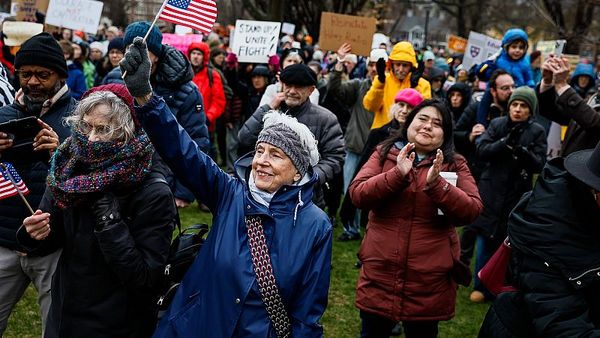Steve Taylor, Deborah Booth and Rohit Irudayarajan, ‘Diasporic engagement and the climate crisis in Kerala: inclusive disaster relief and reconstruction?’, South Asian Diaspora, Taylor and Francis, Vol 15, 2023.
The State of Kerala has long been recognised for its progressive development index. The much acclaimed ‘Kerala model’ has enabled affordable healthcare, accessible and quality education, led to the reduction of poverty and made significant strides in gender equality. On top of the State’s welfare policies, such development was considerably aided by the remittances sent to the State by its migrant population who had emigrated primarily to the Gulf countries for better opportunities. The Kerala NRI or the ‘pravasi’ has remained a perennial figure in Kerala’s imagination of itself.
However, the State is not without its challenges. Kerala has been highlighted as a hotspot which is vulnerable to climate change. Its varied geographical features make it prone to natural disasters like floods, cyclones and landslides. The July-August 2018 floods were witness to the fact. The onset of heavy rainfall led to the State getting devastatingly flooded. According to the India Meteorological Department, Kerala received 2346.6 mm of rainfall from June 1, 2018, to August 19, 2018, in contrast to an expected 1649.5 mm of rainfall. This rainfall was about 42% above the expected rate. Over 450 people lost their lives in the floods and about 1.4 million people were displaced. Reconstruction efforts following the devastation are still going on in many parts of the State.
The role of the pravasi
The Malayali diaspora played a huge role at this juncture in mobilising aid and other essentials, along with the government machinery, to areas which were deeply affected. The Kerala Chief Minister had directly appealed to the NRI community to help the State in rebuilding itself. Remittances kept flowing from the migrant population for reconstruction efforts and were a huge part of why the State could build itself back to normalcy again. At the time of the 2018 floods, it was estimated that 36% of Kerala’s State Gross Domestic Product originated from international remittances. In this paper, Steve Taylor et al try to understand the extent of the Malayali diaspora’s engagement during and after the floods and whether these efforts were inclusive of all people across caste, class and religion.
The methodology
The research for this paper was done between 2018 and 2023 in order to effectively understand how efforts from the diaspora population helped the State during and after the flood. A survey was conducted in 2019 to study the effects of the floods in general, which was followed by a project specific to this paper from 2022-23 which involved interviews with households as well as with key representatives of the Malayali diaspora. This latter project was to get an understanding of the role of the international Malayali community in relief and reconstruction efforts.
And true to anecdotal evidence, it was found that the remittance aid to Kerala during the floods played a huge role in immediate and subsequent relief efforts. Malayali diaspora communities and organisations across the world came together to channel money, medicines and other essential goods. A member of a Malayali diaspora organisation in Oman stated that goods which were sent to Kerala would be collected by on-ground communicants from the airport and then transported and distributed to areas which direly needed them. Many such organisations set up 24/7 call centres to receive and co-ordinate urgent calls for medicines and other supplies. The sheer scale and dedication, the authors of the paper note, of the Malayali diaspora during the 2018 floods had to be commended.
These sentiments were echoed by the recipients as well. People were grateful that the ‘global Malayali community’ stepped up during the difficult time.
A participant from Pathanamthitta said that he was able to rebuild his house through aid received from the migrant community he was once part of when he was a labourer in Saudi Arabia. This shows how the international diaspora did not just stop at efforts during the flood but also helped in post-flood reconstruction.
However, were such efforts inclusive? Did all sections of society, irrespective of caste, receive such aid?
The disparity in aid efforts
Kerala is not immune to the problem of caste. Hierarchies and social ostracisation based on caste cut deep in the State. The 2011 Census of India indicates that Dalits (Scheduled Castes) in Kerala constitute 9.1% of the State’s population, with Scheduled Tribes accounting for 1.5%. The SC and ST population’s economic activity is often limited to low-income agricultural labour and/or informal labour. Spatially also, extensive ghettoisation of the Dalit population has concentrated them in so-called ‘colonies’ which are often cut-off from other residential areas and government resources. This makes it difficult for them to avail of essentials in order to live a dignified life.
This ostracisation can be noticed in international migration patterns as well. Emigration from Dalit households has been considerably lower when compared to non-Dalit households. This in effect means that the economic prosperity which came with foreign remittances was more or less denied to Dalit populations. There is little evidence to suggest that international migration has done much to reduce caste disparities in the State.
During the survey, all the participants from diaspora communities were keen to stress that no discrimination was meted out during the relief efforts.
All essential goods, monetary relief and medical supplies were given to areas without looking at social markers. And to some extent these claims were true. While there was evidence of initial immediate aid during the worst of the floods in the form of food parcels and other medicines, such effort disappeared, as per accounts of the SC/ST communities, when the water settled. After that, it came to be exclusively limited to existing channels and networks of international migrant support. The involuntary ghettoisation, which keep Dalit populations isolated in everyday life, aggravated post-disaster efforts.
The authors theorise the period, where there was an attempt to bring immediate relief to all sections during the floods, at the heights of crisis, when ‘normalcy’ was suspended, as a type of ‘intensive transnationalism’. Intensive transnationalism was seen in times of crisis in other diaspora communities as well, such as when the Pakistani diasporic community came together to finance aid to Kashmir after the 2005 earthquake.
However, such transnationalism is brief. Once the initial crisis-period is over, further reconstruction and post-relief efforts rely heavily on existing structural and social networks.
For example, Alappuzha, which was one of the worst affected districts during the floods, was a recipient of frequent aid. However, the ‘colonies’ in the district were stranded. Since migrant aid was often provided through already existing networks and connections — a fact which was readily admitted by diaspora organisations — colonies were cut off. Help from the government was also minimal. Moreover, the World Bank said that there was more than a 14% increase in overseas remittances to India after the 2018 floods, a part of which can be attributed to diaspora sending money to their families to cope with the aftermath of the devastation. This is again a privilege not accorded to the Dalit population who do not have migrant family members or remittance networks.
While not done consciously or with malicious intent, diasporic post-flood aid remained largely out of the reach of marginalised communities of the State. The dependency of these organisations on existing networks made sure of that. The authors warn State and national governments that heavy reliance on diaspora communities for aid will inevitably lead to such disparities, especially if the government is not there to bridge the gap.







